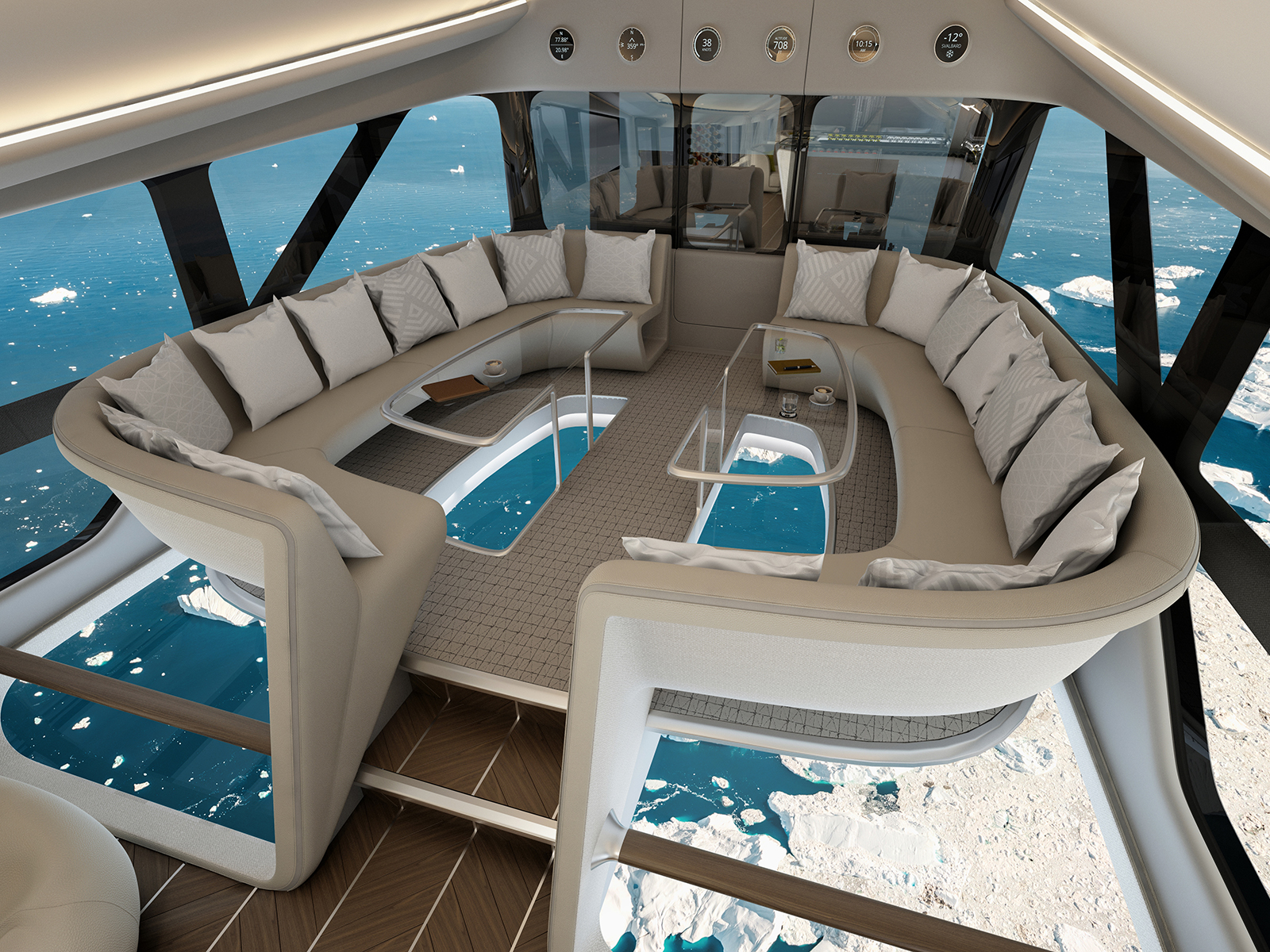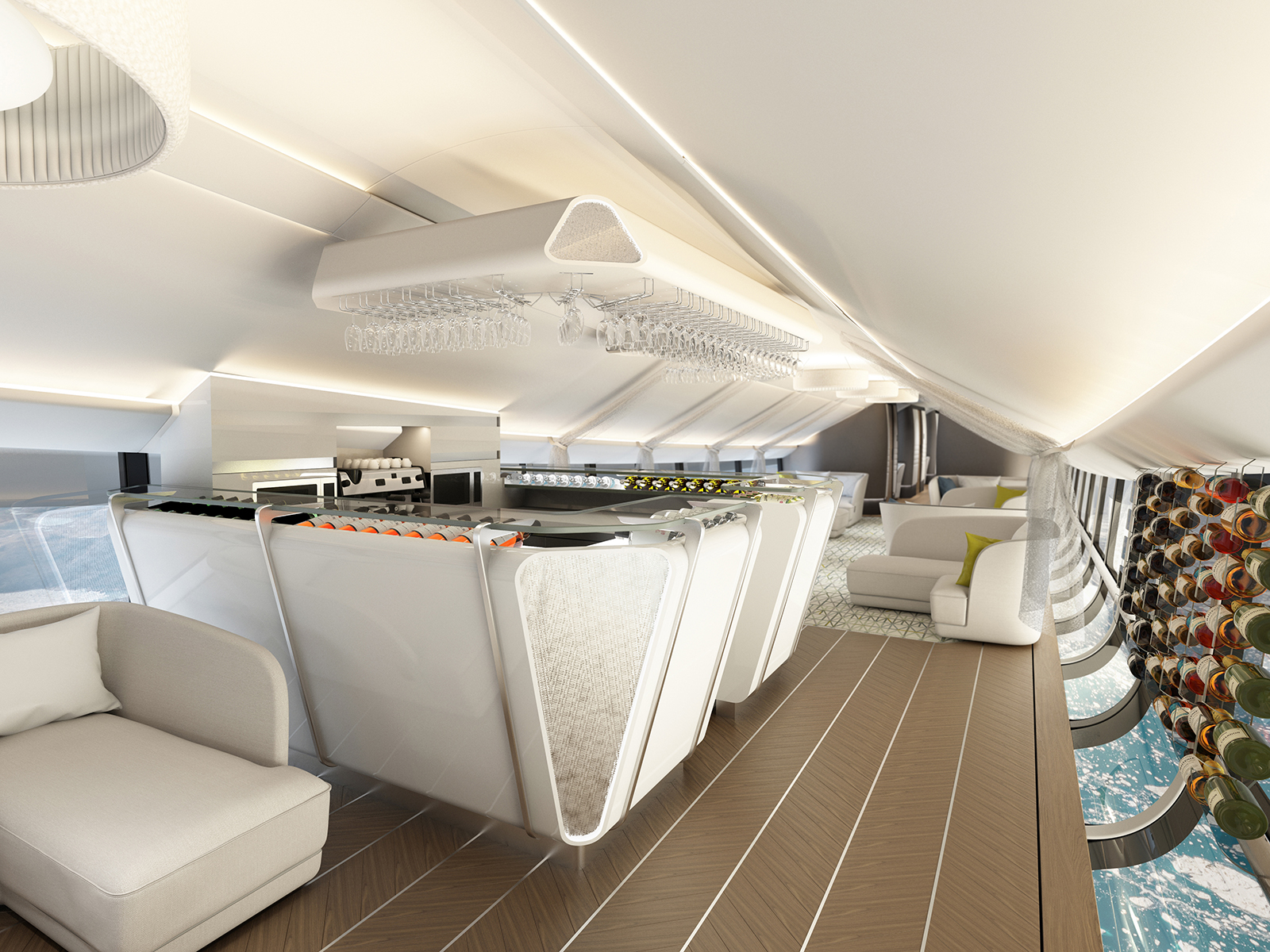Flying High: The Future of Sustainable Air Travel Has Arrived
Years of research and development into airship design is culminating in an exciting new form of low-impact transport, combining every comfort with panoramic views
Years of research and development into airship design is culminating in an exciting new form of low-impact transport, combining every comfort with panoramic views
With Earth Day on April 22, the collective focus falls on how we can all live more sustainably. In travel, this conversation draws attention to the ongoing efforts made to find more environmentally friendly ways to travel by air. Flying remains problematic for those seeking to reduce their carbon footprint.
Enter the airship, or lighter-than-air aircraft. Surpassed by the capabilities of aeroplanes in their early days, airships are now benefiting from new innovations that could make this type of aircraft the next big thing in low-impact travel. Hybrid airship technology, developing airship design with new aerospace technology harnessing the buoyancy of helium, is one way these advances are being achieved.
We found our prototype aircraft burnt only a quarter as much fuel as any equivalent type of aeroplane . . . and, in service, we’re aiming for a 90% emissions reduction before achieving zero emissions by the end of the decade—Tom Grundy

“Hybrid air travel has been designed from the ground up to be efficient,” says Tom Grundy, CEO of Hybrid Air Vehicles—the company behind Airlander.
The Airlander 10 will be the first hybrid air vehicle entering service from 2025, with the capability of staying airborne for up to five days at a time. Flying at an altitude of up to 10,000 feet (3,048 m), the noise- and vibration-free airships will operate in all weather conditions, and have the ability to take off and land on virtually any flat surface. In terms of safety, Airlander is designed and manufactured to meet the same standards and regulations as conventional aircraft.
“We think of Airlander as a mode of transport that sits between what we do with aeroplanes and what we currently do on the ground. When you’re in an aeroplane, you’re flying very fast and burning a lot of fuel. On the ground, the journey is a bit slower and often a lot less expensive. We designed Airlander to sit between the two and to stand out from those markets for being efficient by design.” A journey of roughly 300 kilometres (186 miles) would take four hours and 24 minutes by plane compared with five hours and 20 minutes by airship.

Aviation has huge challenges to overcome in becoming energy efficient and it’s becoming harder to justify emitting that much carbon dioxide. In an airship, you’ll also be flying in comfort and style—Carl-Oscar Lawaczeck
While sustainability may be the factor driving the most interest for airships now, their potential capabilities go beyond these primary eco credentials. One of the long-term goals for this new generation of airships is to use this mode of flying to service less accessible parts of the world, and for the transportation of goods as well as remote travel.
“There are huge parts of our world that aren’t very well served by transport infrastructure right now,” says Grundy. “So, looking at remote places, looking at places where the transport infrastructure hasn’t been well developed, and looking at the challenges of getting freight ships in and out of certain parts of the world, there’s interest in our product from the point of opening up those less accessible locations and providing them with all the benefits air travel can bring.
“We started off designing Airlander as a new form of transport to help in those underserved parts of the world, then as a very low-carbon, low-emissions vehicle, we found our prototype aircraft burnt only a quarter as much fuel as any equivalent type of aeroplane,” he continues. “That’s a 75% emissions reduction right from the prototype stage and, in service, we’re aiming for a 90% emissions reduction before achieving zero emissions by the end of the decade.”
This reduction in emissions is achieved because Airlander doesn’t burn jet fuel to stay airborne, it uses helium instead. It currently only burns fuel in order to fly. By 2027, two of Airlander’s combustion engines will be replaced with electric motors powered by hydrogen fuel cells. Three years after this the airship will switch to all-electric motors creating a zero emissions aircraft.

The first Airlander vessel to come into service will launch with the promise of flying passengers to remote locations in comfort without impacting the environment.
Earlier this year, Cookson Adventures announced a partnership with Hybrid Air Vehicles based on its belief that this is the future of low-impact air travel, dubbing it the explorer yacht of the skies. Cookson will mark the launch of Airlander 10 by hosting a desert camp experience, soaring over the beaches and desert dunes of the Arabian Peninsula in Oman, combining airship travel with time at a tented camp in the desert.
These hybrid airships are also represented by OceanSky Cruises, a company bringing expertise in aviation and luxury travel together in planning experiential airship journeys, with North Pole expeditions (already available to book) beginning between 2024 and 2025 when the vessel first comes into service.

“We are making it our business to operate future airships, breaking into the market through the luxury experiential travel sector, but with the goal of entering into other markets such as cargo and transporting people in the mass market from A to B, because that’s what the world requires,” explains Carl-Oscar Lawaczeck, CEO of OceanSky Cruises. “Aviation has huge challenges to overcome in becoming energy efficient and it’s becoming harder to justify emitting that much carbon dioxide. In an airship, you’ll also be flying in comfort and style.”
Showing great potential for luxury expeditions of the not-so-distant future, these airships will allow you to move around freely during the journey, with expansive windows making the most of the wraparound views. Airlander offers a smoother ride for passengers than conventional aircraft—the large size of the airship means it’s much less effected by turbulence plus the engines are not located near the passenger cabin so there’s significantly less vibration.
“It’s a beautiful environment, so we think there’ll be huge interest in eco-luxury travel experiences to parts of the world that are hard to get to right now and to be there without impacting that environment,” says Grundy.
“Our vision and reason for developing Airlander is so much bigger though,” he adds. “The longer-term future for Airlander is in giving ourselves a new low-emissions option for logistics, freight, and passenger travel in parts of the world that really need that development. Providing this beautiful experience in luxury travel is the beginning and steps two, three and four are coming hot on its heels.”
Banner image: The Airlander 10. Courtesy: Hybrid Air Vehicles